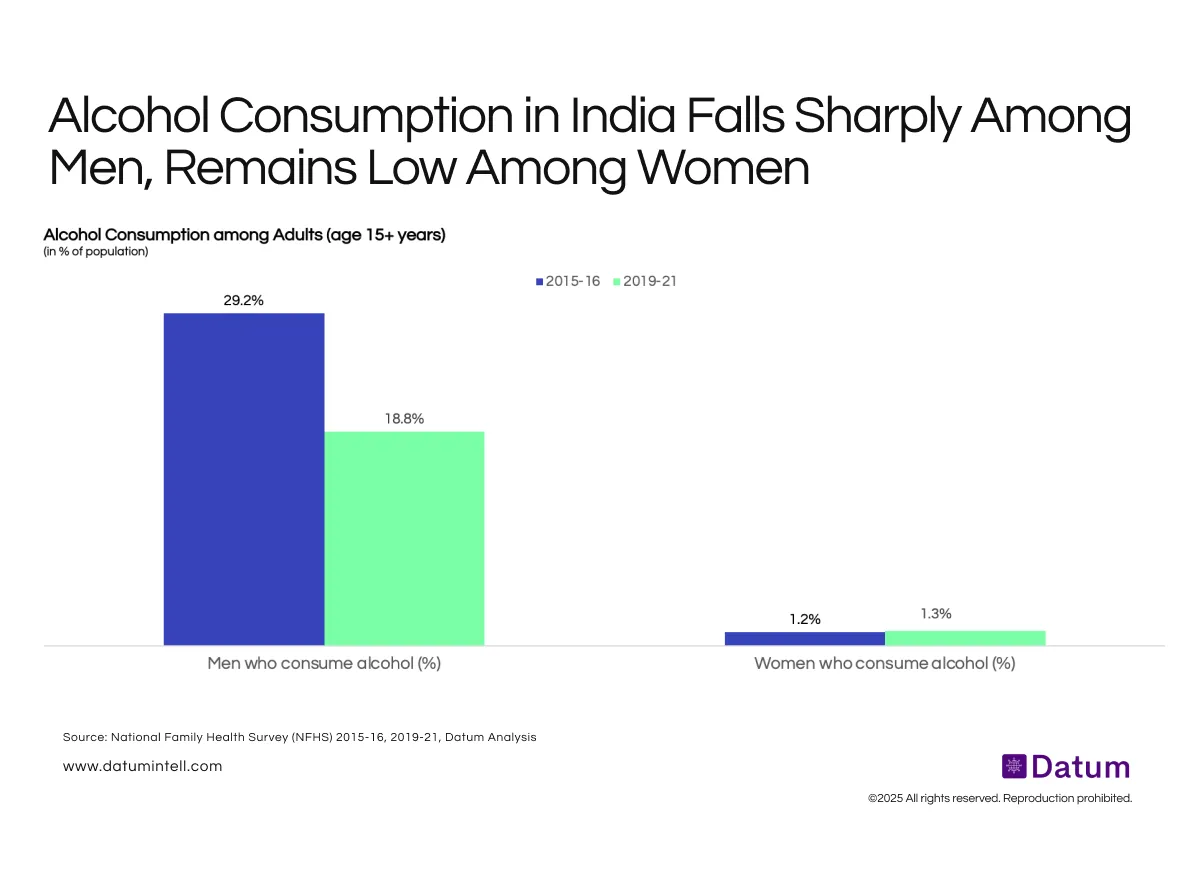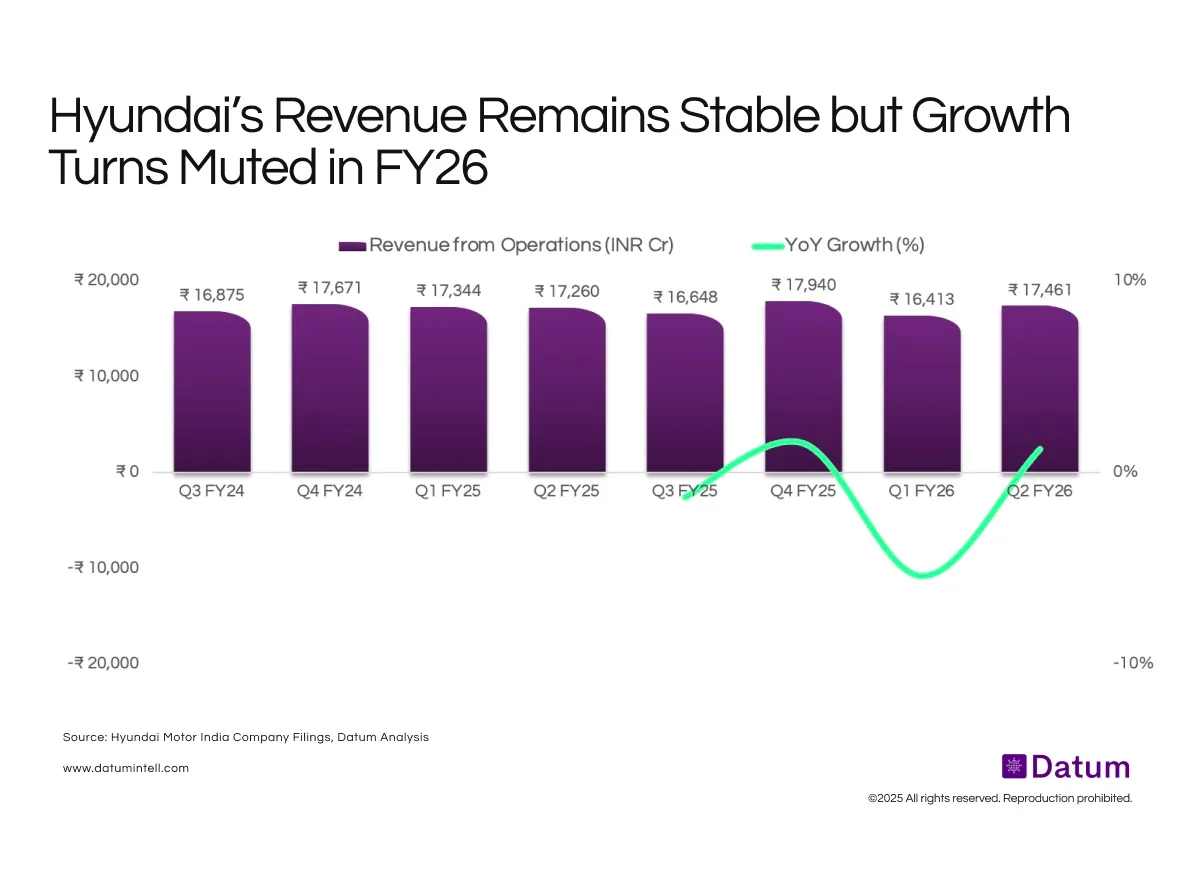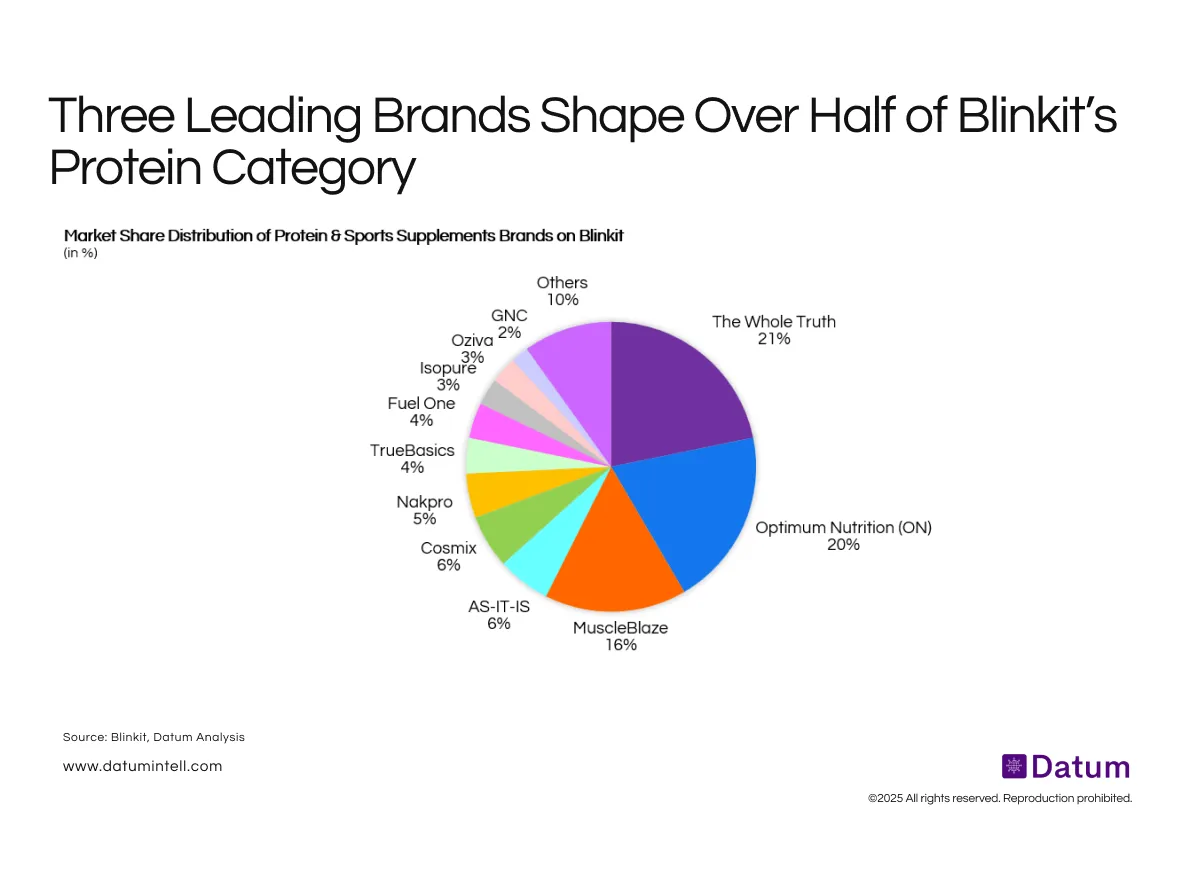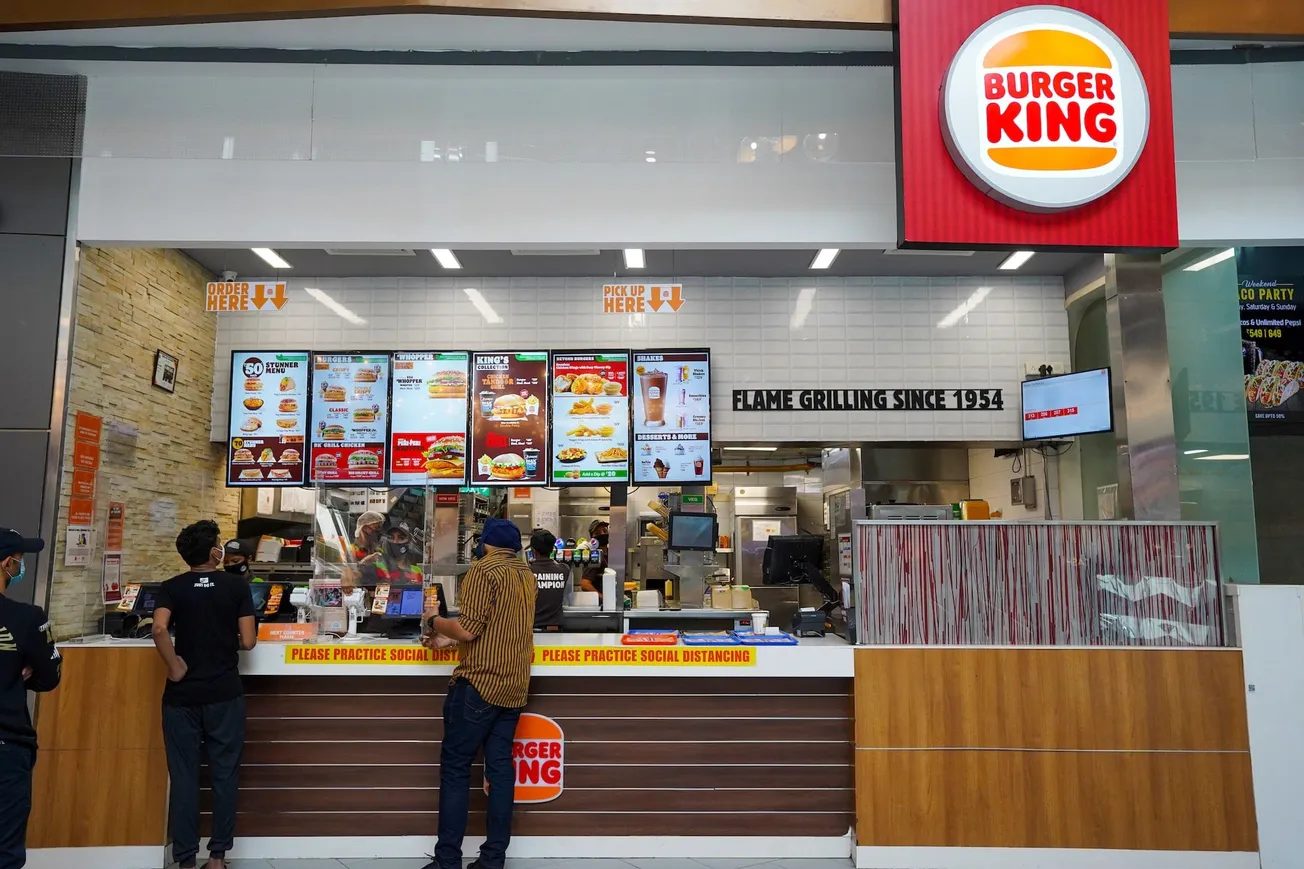Table of Contents
According to the National Family Health Survey (NFHS), India has witnessed a marked decline in alcohol consumption among adult men over the past decade.
Between 2015–16 and 2019–21, the proportion of men aged 15 and above who reported consuming alcohol fell from 29.2% to 18.8% - a reduction of over 10 percentage points.
In contrast, alcohol consumption among women saw negligible change, inching up slightly from 1.2% to 1.3%, reflecting deep-rooted social and cultural barriers that continue to shape women’s drinking behavior in India.
What It Means
The decline in male alcohol consumption likely reflects a mix of policy restrictions, health awareness, and cultural conservatism, particularly in rural and low-income regions. However, the near-static numbers among women indicate that social stigma and limited participation in formal consumption spaces continue to shape behavior.
What It Means
The data underscores a structural and behavioral shift in India’s drinking patterns. Several factors likely explain the sharp drop among men:
- State-Level Regulation and Prohibition:Stricter alcohol controls and intermittent bans in states such as Bihar, Gujarat, and Nagaland have reduced formal consumption. Many states have also introduced higher excise duties and limited retail availability, especially in semi-urban and rural regions.
- Health Awareness and Lifestyle Changes:Rising health consciousness, particularly among middle- and upper-income urban consumers, has led to moderation in alcohol use. The same consumer segments driving fitness, low-sugar, and organic product trends are also increasingly cautious about alcohol intake.
- Socioeconomic and Pandemic Effects:Economic stress during the COVID-19 pandemic and sustained inflation in discretionary categories have further curbed routine alcohol spending.
- Persistent Gender Divide:While male consumption has declined, women’s participation remains minimal - a sign of enduring social stigma, limited nightlife inclusion, and restricted retail accessibility for female consumers.









